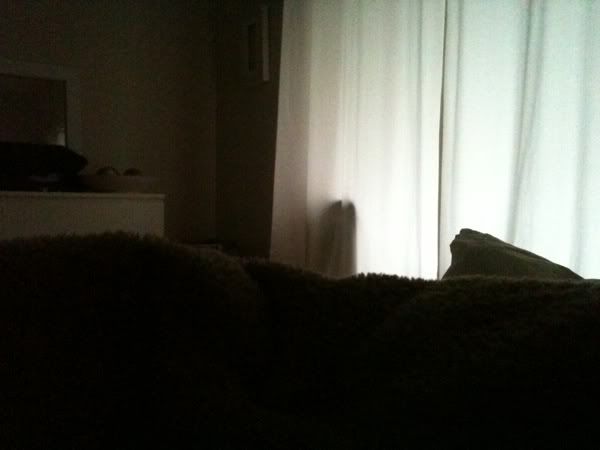Exit Through the Gift Shop (2010) - Banksy

Banksy, an elusive underground British artist who's known for the stunts he pulled at various museums (sneaking in his incongruous, ironic art and place them in between classics) and his witty stencils and sculptures on the streets all over the world, is credited as the film's director here and also in it with his face forever under the hood and his voice distorted for legal issues. But the film belongs to a little fat Frenchman with mutton chops named Thierry Guertta, aka. Mr. Brainwash.
Guertta was an accidental tourist to the scene. Following his cousin known as Invader (he started putting up the Space Invader mosaics all over Paris in the late 90s) with a video camera forever attached to his hand, Guertta rides the tide of this DIY guerrila movement with Shepard Fairey (whom he runs into at a LA Kinkos making gigantic copies of his now-famous Obey Giant) and slew of other artists including, Neckface, Swoon and others in other cities. Guertta was a fanboy of sort, documenting all their activities in thousands and thousands of videotapes. His white whale was Banksy. There is a funny bit in the Guertta interview where he becomes speechless when he recalls the first time he meets the notoriously reclusive artist. They become a good friend after Guertta being a Banksy's posse during the artist's stunt in Disneyland with his Guantanamo inspired orange-jumpsuit-and-black-hooded blown up doll on the anniversary of 9-11.
The origination of the doc in itself is an interesting story (if everything told here indeed is true): Encouraged by Banksy, Guertta makes a street art documentary from his extensive footage- which the artist later describes as utter shit made by a madman with a very short attention span (we get to see some of the unwatchable collage of random images). After that, he makes Guertta leave all his tapes with him with the intentions of making this doc and advise him to concentrate in his own street art activities. Guertta follows his idol's advice to the heart.
Having studied studio art for three years in school and been married to an artist with a considerable talent and dedication, I've always had strong opinions about what is considered art. When street art took off last ten years or so, peaked with Shepard Fairey's Hope poster for the Obama 08' campaign, I was thoroughly disgusted by its rampant commercialization.
Personally I like art that shows the signs of artistry- labor, thoughts, something created by artist's own hands. The biggest problem I had with Shepard Fairey is that he doesn't have any skills nor wits other than tracing the original imagery and putting some color over it (he has a clothing line and is getting sued by an AP reporter who took that Obama picture for copyright infringement). I love the work by Swoon, whose intricate, beautiful wheat pasted paper-cuts all over NY show she can really paint and draw well.
*On a side note, I recognized her when I saw her on the screen, she is that very attractive waitress at a now-defunct Latin bistro in Brooklyn I frequented. Regrettably- I was just one of those yuppie customers for her. I should've said hello had I known!
Banksy does two things right in this doc: It is a very well made, good archival material for street art movement, with a lot of humor: the guerrilla style, tag-and-run aesthetic brings a lot of funny, entertaining moments.
It also questions the nature of art and art as commodity- Guertta, now Mr. Brainwash, tries to become an 'artist over night' (in his own words) by having a solo show titled, Life is Beautiful, in grand scale, taking over a huge space in LA, churning out one bad street-art-meets-pop-art print after another, then promotes the hell out of it and makes millions (and the whole process is hilarious).
Banksy himself is not immune to the commodification of street art. He is the one who had a grand art show in LA (featuring a painted elephant no less) that attracted Hollywood's who's who and made street art the toss of the art auction houses over night. Whether Exit Through the Gift Shop is one of his elaborate joke or not, Banksy raises some interesting questions about the legitimacy of being an artist by presenting his own creation (figuratively or otherwise), Mr. Brainwash.
*Shepard Fairey criticism by Mark Vallen for anyone interested.



























